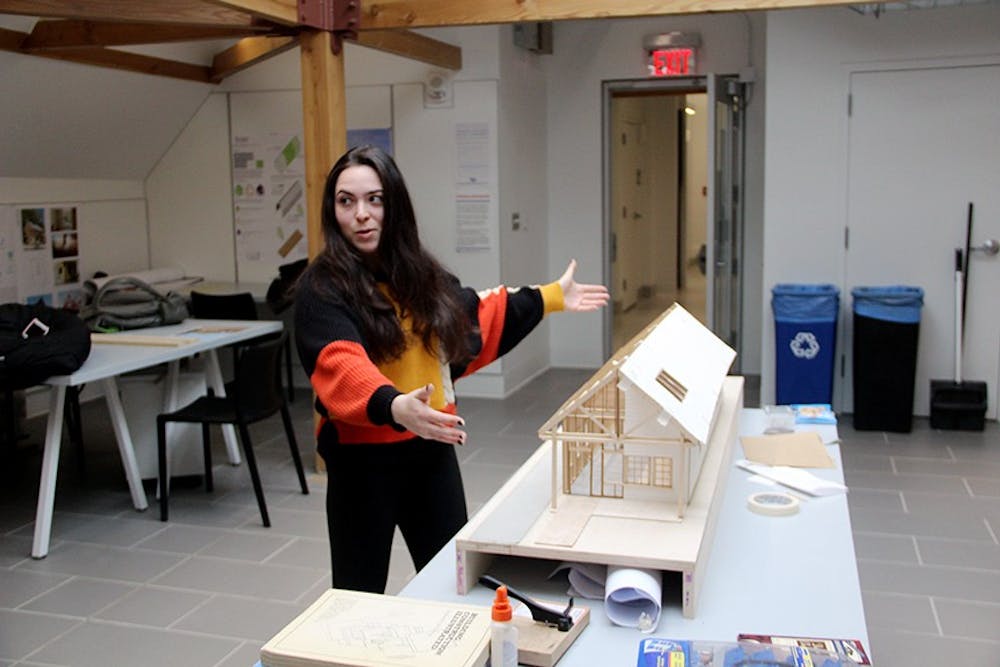On Tuesday, UB will host a symposium to begin an effort in the architecture school to address Buffalo’s affordable housing shortage.
As graduate students wrap up a semester-long design project focused on creating affordable, inclusive housing, Tuesday marks the beginning of a more collaborative effort to bring together alumni, interested donors and experts in affordable housing development.
The students’ models will be on exhibit during the event, where attendees will also hear from keynote speakers Henry Cisneros, former secretary for Housing and Urban Development under President Bill Clinton, and sponsor Donald Capoccia, a UB alum and real estate manager in New York City.
The event aims to connect alumni, students, faculty and experts from around the U.S. who are doing work in affordable housing development, said Mark Foerster, professor of urban and regional planning.
“We talk a lot about Buffalo, but [affordable housing] is a global issue, and I think that UB is poised to do something that is not being done anywhere else in the university arena, and that is to do the design, the real estate work, the planning work and actually building,” Foerster said. “This is not an academic exercise that gets put on the shelf, but will actually have an impact in the real world.”
The goal is for students to design and eventually build a house in an underserved Buffalo neighborhood. A group of 13 graduate students are working on inclusive design models, with the goal that the prototypes be used to combat the growing lack of affordable housing many cities face.
Faculty and staff in urban planning, real estate and architecture have worked on affordable housing for years in separate efforts, according to Ed Steinfeld, an architecture professor.
“The symposium is the kickoff of that kind of organized effort,” Steinfeld said. “It will bring together a lot of people who are really knowledgeable about affordable housing and who have a long history of design-build with their schools.”
Steinfeld started the affordable housing design studio, and said he hopes students will be able to build a home from their designs by summer 2019. The goal is to secure funding to build the home over the next few months, whether through donors or partnerships with local nonprofits, he said.
“Architects in general should be engaged in doing some socially conscious work, not just working for wealthy clients,” Steinfeld said. “And I think it’s a particularly challenging project to work on affordable housing, so it’s a very educational activity, because it means working with significant constraints and addressing the needs of families that don’t have much choice or power in the market.”
Graduate student Alexa Russo’s design was used for the basis of a spring design-build studio. She designed a one-story row-house model with a low cost in mind.
To create a model for affordable housing, Russo found different ways to cut costs on labor and materials, using bamboo flooring and vinyl siding, both relatively inexpensive. She also designed attic space for storage rather than a basement, to save costs on construction and labor.
Russo said it was equally important for the model to be “aesthetically” appealing.
“By providing this new architecture, people can live in these places that are not just like, ‘Here’s this dingey affordable housing, low-income place,’ but something that’s also beautiful for them as well,” Russo said. “A house should feel like a home.”
Russo’s design was universally accessible, with knee clearance under the sinks, extra wide hallways for wheelchair accessibility and a no-step entrance.
Stephanie Cramer, an architecture professor who is teaching the graduate studio based on Russo’s design, said her students used Russo’s model to build from. Students created their own models, keeping in mind different needs for different homeowners, from the elderly to refugee families.
“Affordable housing is a tough calling,” Cramer said. “If it was easy, everybody would be doing this. What’s beautiful about working with students is they don’t come in with preconceptions about what can and can’t be done. They’re not afraid to put out ideas that are alternative and a little bit wild, and that’s where change happens.”
The symposium will be held in 403 Hayes Hall from 7:30 a.m. to 2 p.m.
Sarah Crowley is the senior news editor and can be reached at sarah.crowley@ubspectrum.com and @crowleyspectrum.





